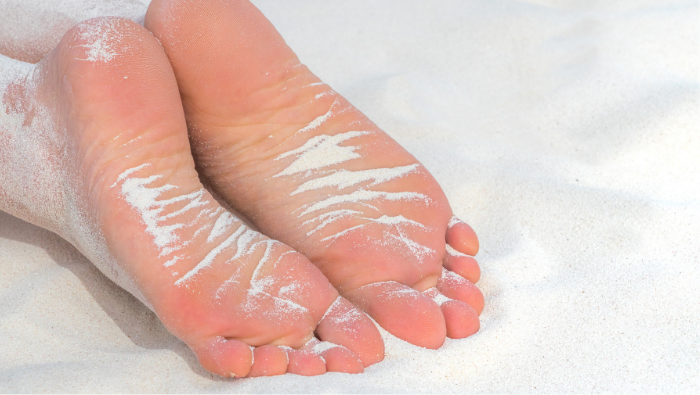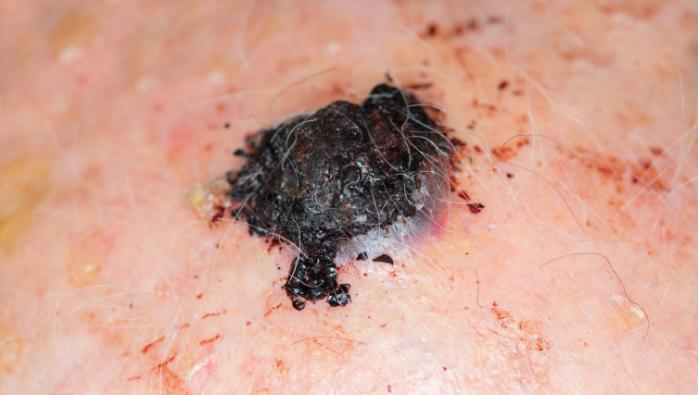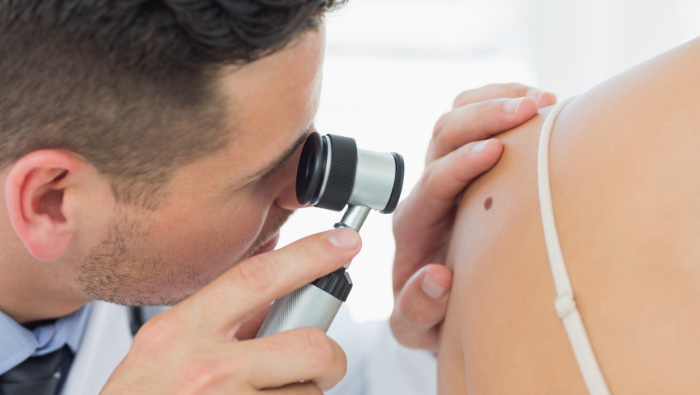Foot melanomas are a type of skin cancer that affects the feet. They can appear anywhere on the foot including the sole of the foot. They are usually treatable if caught early, but if left can be life threatening.
Contrary to popular belief – podiatrists don’t just deal with fungal and ingrowing toenails! We are often the first people to suspect and diagnose melanomas on the foot.
Imagine the scene:
It’s a hot sunny day abroad, sunbathing around the pool. You are really careful in the sun so you are applying factor 30 every 2 hours. You have spent hours researching the best sun cream to use and which has the best UVA and UVB ratings. When you apply the sun cream you carefully apply to every party of your body. When you get to your feet you rub it all over the tops of your feet – taking particular care of those toes, burnt toes are not fun! Now you are ready to sunbathe. Its time for the back of your legs to get some sun so you decide to lay on the sun lounger on your front.
Did you know if this describes your normal routine you are at a greater risk of getting a skin cancer? Why I hear you ask? I’ve used factor 30, covered my whole body and I am applying every 2 hours….. but you missed one vital part!

THE SOLES OF YOUR FEET!
Thankfully in clinic, its rare to see a skin melanoma on the foot. However, they do happen and unfortunately due to their location they are often discovered too late. So apart from applying sun cream to the soles of your feet when sunbathing, what else can you look for to ensure you aren’t one of the unlucky ones.
What is a foot melanoma?
A foot melanoma is a type of skin cancer which affects the skin cells in the foot. 3-15% of all skin melanomas occur on the foot.
Symptoms of foot melanomas
The first sign of a melanoma is a change in shape, colour or size of an existing mole. Most moles are totally harmless but its noticing the changes which can occur in a melanoma which is key. Here is an acronym which can help when monitoring new or changing moles to determine if they are a melanoma.
ABCDE
A – Asymmetry – usually one half of the mole isn’t the same shape as the other
B – Border – the mole may have an irregular jagged border to it. I also use this to monitor Bleeding, does it keep bleeding if knocked?
C- Colour – Is it made up of more than one colour. Moles which are non-malignant are usually one shade of brown in colour.
D – Diameter – is it more than 0.6cm in width, is it growing in size?
E -Evolution – is it changing shape, size, colour, texture.
Melanomas don’t always start as a mole. Other things to look out for are:
- A sore that doesn’t heal
- Pigment that spreads from the border of a lesion to surrounding skin
- Redness or a new swelling beyond the border of a lesion
- Change in sensation such as itchiness, tenderness or pain
- Oozing, bleeding or developing a bump over a lesion.
If you notice any of the above it is best to seek medical advice from your GP. If your practice has a GP registered with a specialist interest in dermatology it is advised to see them (even if they aren’t your normal GP). They will use a special tool to magnify the area to look closer where they will be able to make an initial recommendation as to if you need to see a specialist dermatologist or arrange simple excision for testing at the surgery.
My top tips for prevention of foot melanomas
- Always smother the soles of your feet in sun cream – especially if you are sunbathing on your front.
- Always check the soles of your feet for moles or lesions
- Monitor any non-healing wounds or lesions closely for any of the above changes.
- Enjoy the sun safely!



